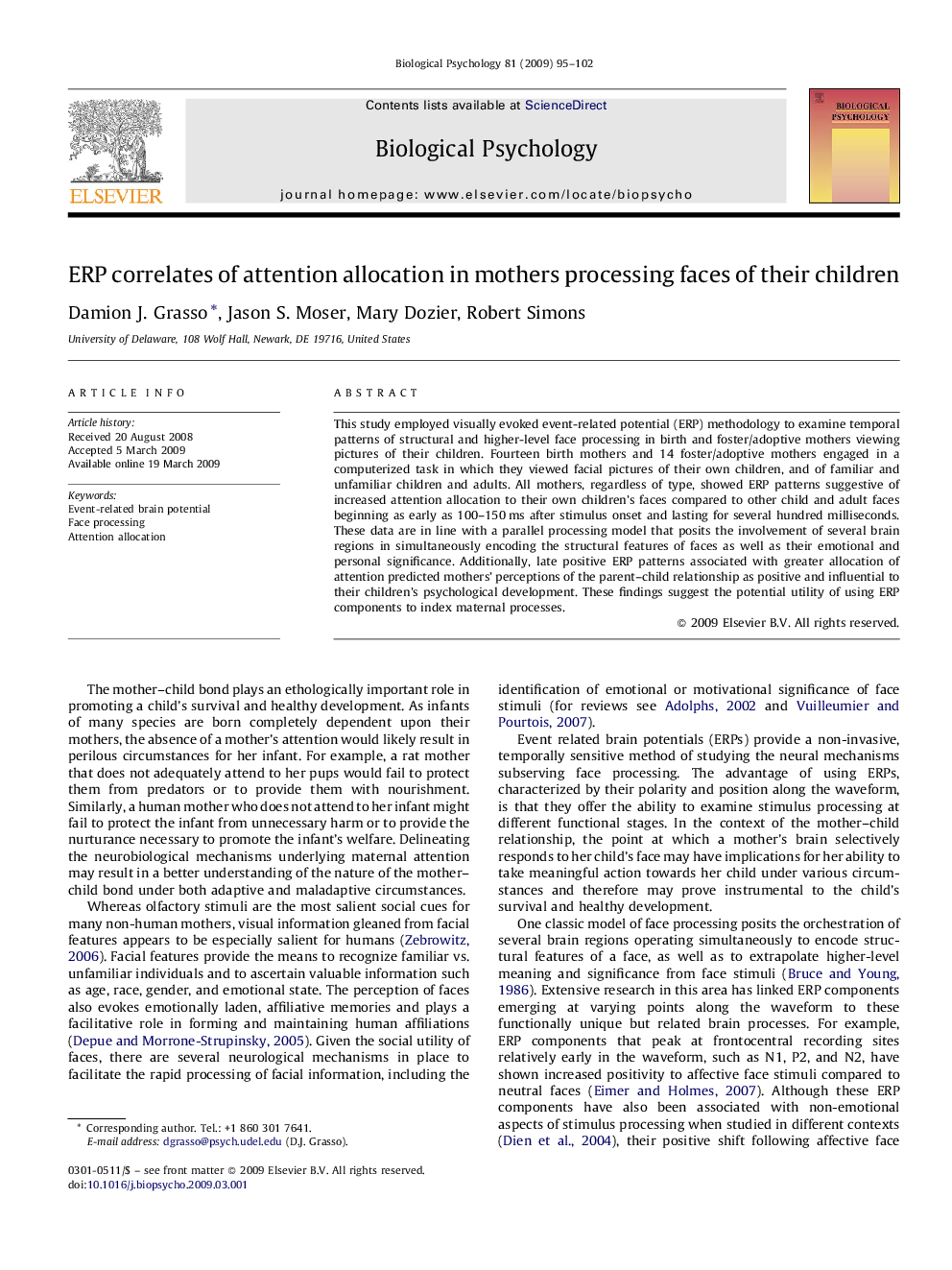| Article ID | Journal | Published Year | Pages | File Type |
|---|---|---|---|---|
| 921287 | Biological Psychology | 2009 | 8 Pages |
This study employed visually evoked event-related potential (ERP) methodology to examine temporal patterns of structural and higher-level face processing in birth and foster/adoptive mothers viewing pictures of their children. Fourteen birth mothers and 14 foster/adoptive mothers engaged in a computerized task in which they viewed facial pictures of their own children, and of familiar and unfamiliar children and adults. All mothers, regardless of type, showed ERP patterns suggestive of increased attention allocation to their own children's faces compared to other child and adult faces beginning as early as 100–150 ms after stimulus onset and lasting for several hundred milliseconds. These data are in line with a parallel processing model that posits the involvement of several brain regions in simultaneously encoding the structural features of faces as well as their emotional and personal significance. Additionally, late positive ERP patterns associated with greater allocation of attention predicted mothers’ perceptions of the parent–child relationship as positive and influential to their children's psychological development. These findings suggest the potential utility of using ERP components to index maternal processes.
